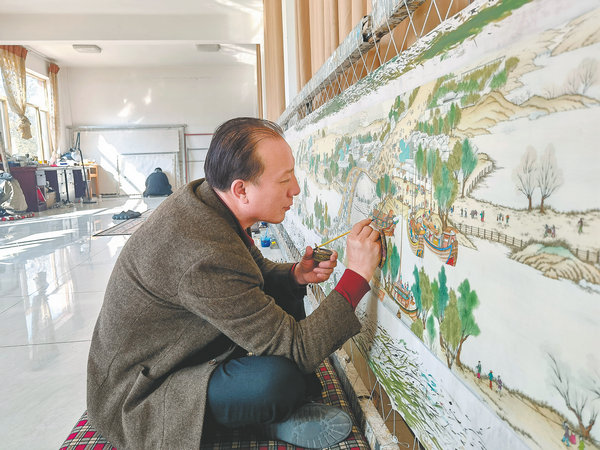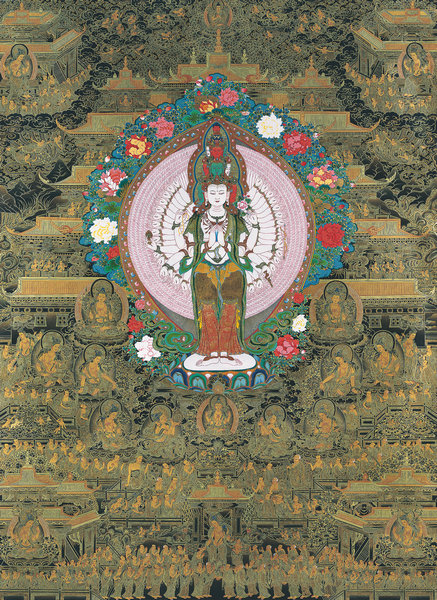Artist displays pride in culture
Thangka tradition motivates painter to show world its essence, Mingmei Li reports in New York.
By Mingmei Li | China Daily | Updated: 2024-11-07 07:21

Once he was a 12-year-old boy painting strokes and grinding pigments from dawn till dusk. Four decades later Nyingbum is a thangka master, passing on the ancient technique to a new generation.
Nyingbum recently concluded his latest exhibition, Inheritance and Beyond, in New York, presenting 16 pieces celebrating Tibetan Buddhism — a culture deeply tied to the Xizang autonomous region, known for its towering mountains and sweeping river valleys.
The exhibition, held at the Rockefeller State Park Preserve art gallery in Pleasantville, New York, in the Hudson Valley, mirrored the essence of Northwest China, particularly Qinghai province, and Xizang in Southwest China, with its picturesque terraces, plateaus, rivers and mountains, at a gentler elevation, making Nyingbum's art "feel like home".
"I feel truly proud as an artist bringing such rich cultural heritage to the United States and the world," said Nyingbum, 53.
"It's more than just art; it's a historical record. This painting tells the stories of the past. I want more people to see the value of thangka art ... and understand its beauty. I believe people will appreciate it, learn to preserve and build upon it, and share it," he said at the exhibition, which concluded last month.

Thangka is a traditional style of Tibetan painting on silk or cotton, usually depicting a Buddhist deity, scene, or mandala. They are religious paintings usually with a bamboo-cane rod pasted on the bottom edge by which it can be rolled up.
Regong arts, which include Regong thangka painting, clay sculpture, applique, and wood and stone carving, have been passed down through generations by local artisans. The distinctive arts originated from the Regong region of Qinghai province and extended to nearby provinces.
They were recognized as a national intangible cultural heritage in 2008 and were enlisted by UNESCO on its Representative List of the Intangible Cultural Heritage of Humanity in 2009.
























